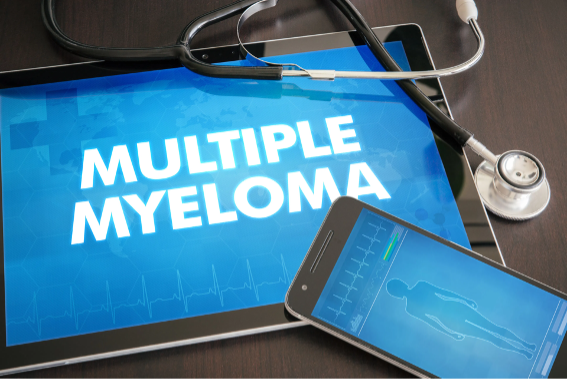Regeneron’s Linvoseltamab Granted FDA Priority Review for Relapsed/Refractory Multiple Myeloma
February 23, 2024
Source: drugdu
 318
318

Davy James
The FDA assigned the biologics license application for linvoseltamab to treat relapsed/refractory multiple myeloma with a Prescription Drug User Fee Act of August 22, 2024.
Image credit: ibreakstock | stock.adobe.com
The FDA has granted Priority Review to Regeneron Pharmaceuticals’ biologics license application (BLA) for linvoseltamab to treat adults with relapsed/refractory multiple myeloma who experienced disease progression following prior administration of at least three therapies.
The bispecific antibody was developed to bridge B-cell maturation antigen on multiple myeloma cells that have CD3-expressing T cells, which subsequently activates T cells to prompt the elimination of cancer cells. The FDA assigned the BLA with a Prescription Drug User Fee Act of August 22, 2024.
An estimated 35,000 US residents will be diagnosed with multiple myeloma on an annual basis. Although research efforts have achieved significant progress in treating multiple myeloma, the disease is not yet curable. Current treatments have been able to inhibit disease progression; however, most patients will require additional therapies as their disease progresses.
The FDA based the Priority Review designation on data from the ongoing, open-label, multicenter, dose-escalation and expansion Phase I/II LINKER-MM1 trial (NCT03761108), which is evaluating linvoseltamab in 282 patients with relapsed/refractory multiple myeloma.2 The Phase I dose-escalation part of LINKER-MM1 primarily analyzed the drug’s safety, tolerability, and dose-limiting toxicities across nine dosing levels with varying administration regimens. Phase II of LINKER-MM1 has a primary endpoint of objective response rate, with key secondary endpoints that include duration of response, progression-free survival, minimal residual disease negativity rate, and overall survival.
Enrollment criteria include having triple-class refractory multiple myeloma or prior administration of three or more lines of therapy. Patients were administered linvoseltamab as part of an initial step-up dosing regimen followed by a full dose. Investigators are also exploring a response-adapted regimen, with patients who were administered linvoseltamab 200 mg every two weeks achieving a very good partial response or complete response allowed to transition to linvoseltamab every four weeks after at least 24 weeks of treatment.
The latest data cutoff occurred at a median follow-up of 11 months, which showed 71% of patients administered 200 mg linvoseltamab (n = 117) achieved an objective response per assessment by an independent review committee, as well as a 46% complete response rate or better.
Linvoseltamab is also being evaluated in the Phase III LINKER-MM3 trial (NCT05730036) trial, which is currently enrolling patients with relapsed/refractory multiple myeloma to compare the novel agent with elotuzumab (Empliciti), pomalidomide (Pomalyst), and dexamethasone.
Other trials for linvoseltamab that are ongoing or in the planning stage include the Phase I/II LINKER-MM4 trial (NCT05828511) among treatment-naive patients recently diagnosed with multiple myeloma; LINKER-SMM1 (NCT05955508), a Phase II trial among patients with high-risk, smoldering multiple myeloma; and LINKER-MGUS1, a Phase II trial (NCT06140524) among patients with high-risk monoclonal gammopathy of undetermined significance.
Regeneron noted that because linvoseltamab is currently under clinical development, safety and efficacy of the agent have not yet been fully analyzed by any regulatory authority.
By editorRead more on
- A new ADC champion has emerged. December 18, 2025
- Domestic ophthalmic monoclonal antibody achieves blockbuster BD December 18, 2025
- Clinical trial application for nasal spray accepted, targeting allergic rhinitis. December 18, 2025
- New drug JSKN027 accepted for clinical trials December 18, 2025
- WHO Warns Europe’s Influenza Peak May Arrive by Year-End December 18, 2025
your submission has already been received.
OK
Subscribe
Please enter a valid Email address!
Submit
The most relevant industry news & insight will be sent to you every two weeks.



